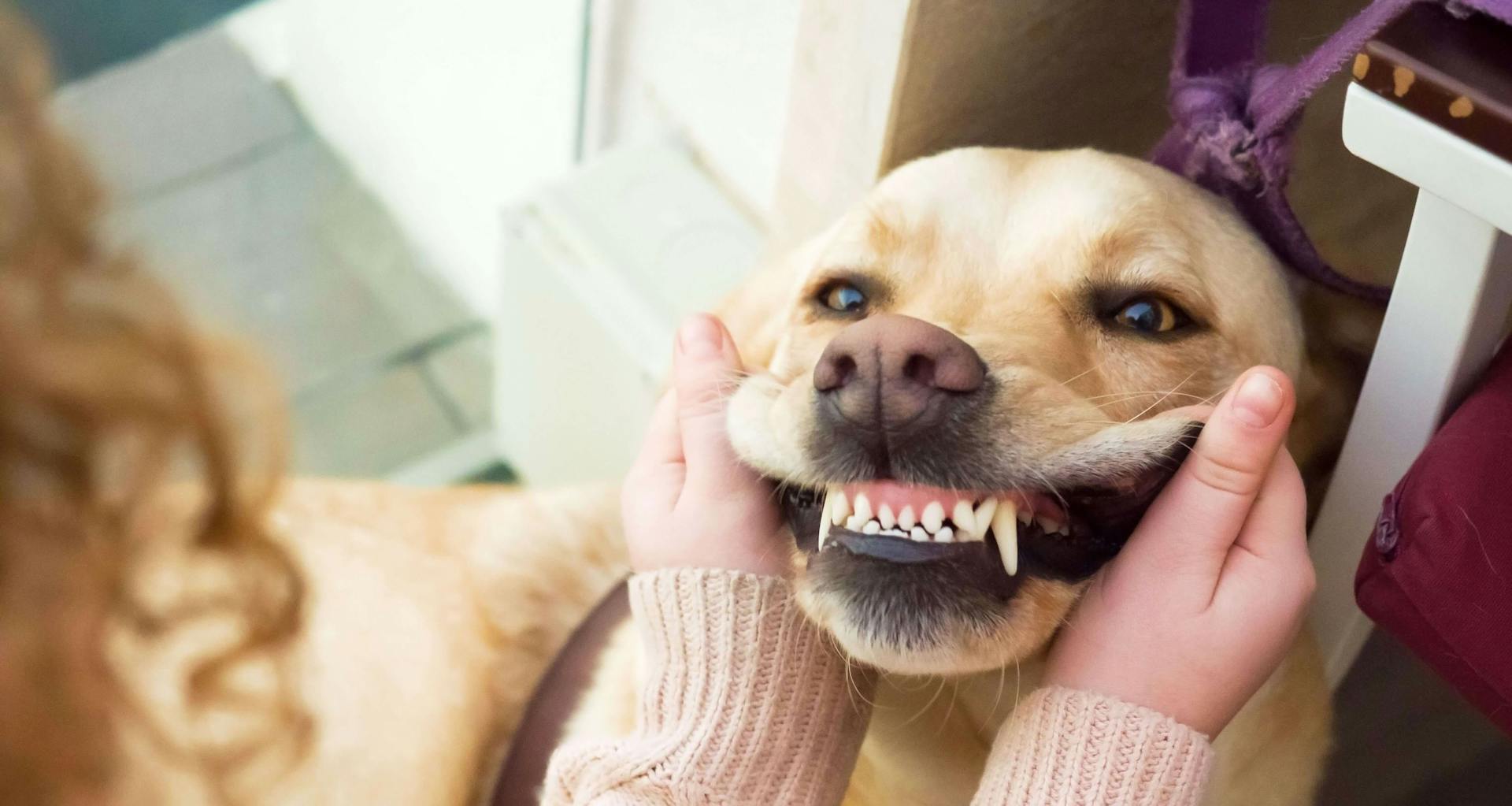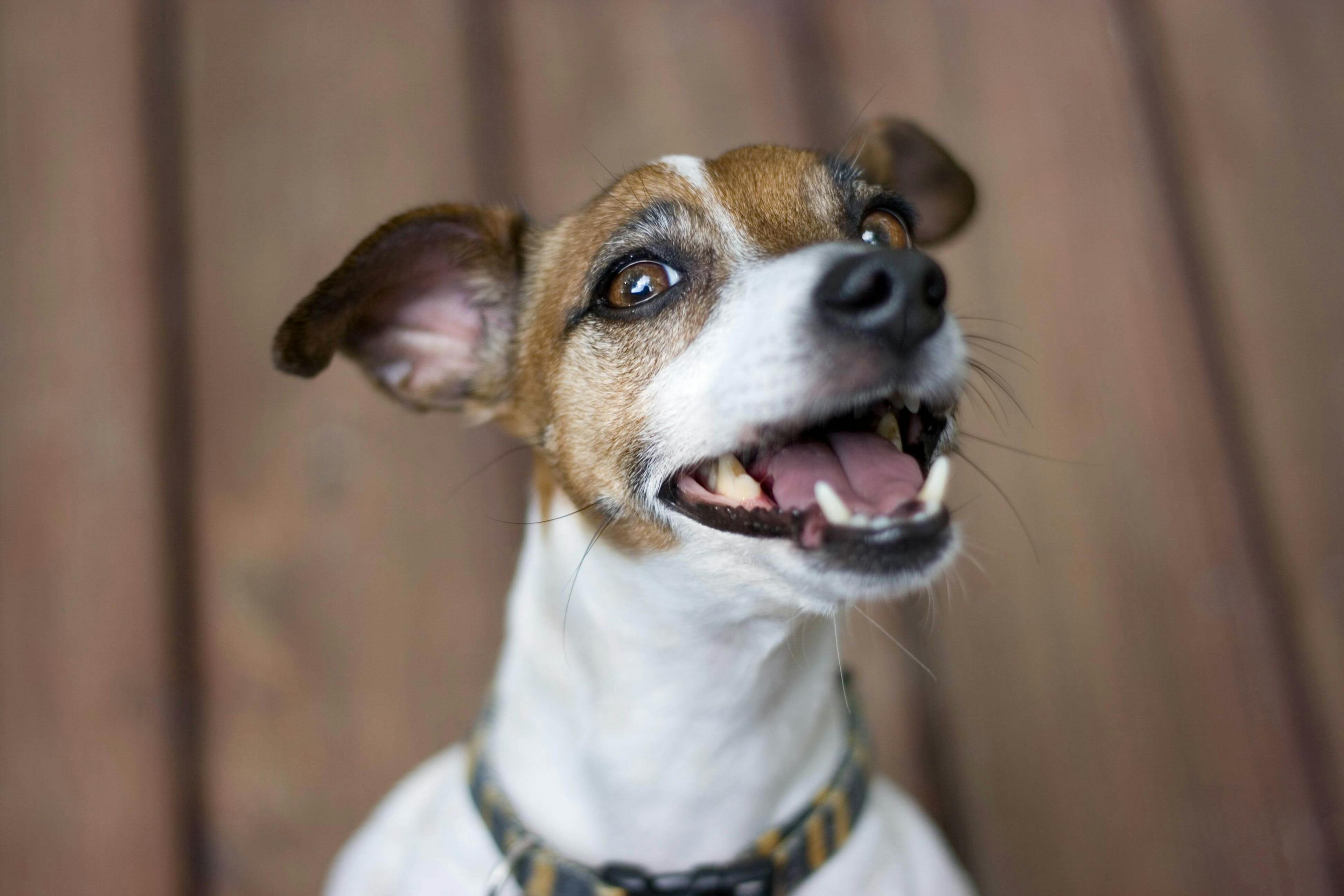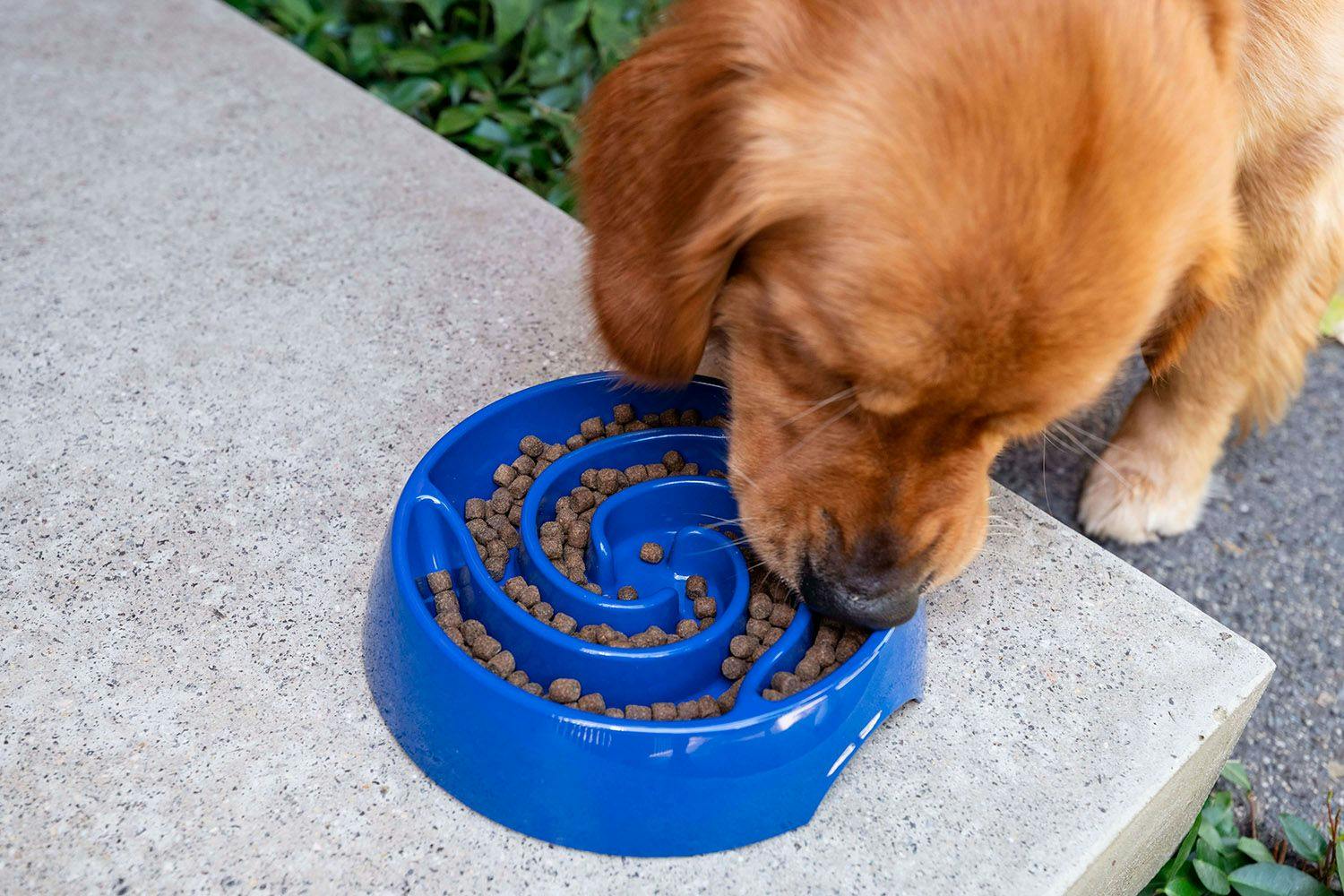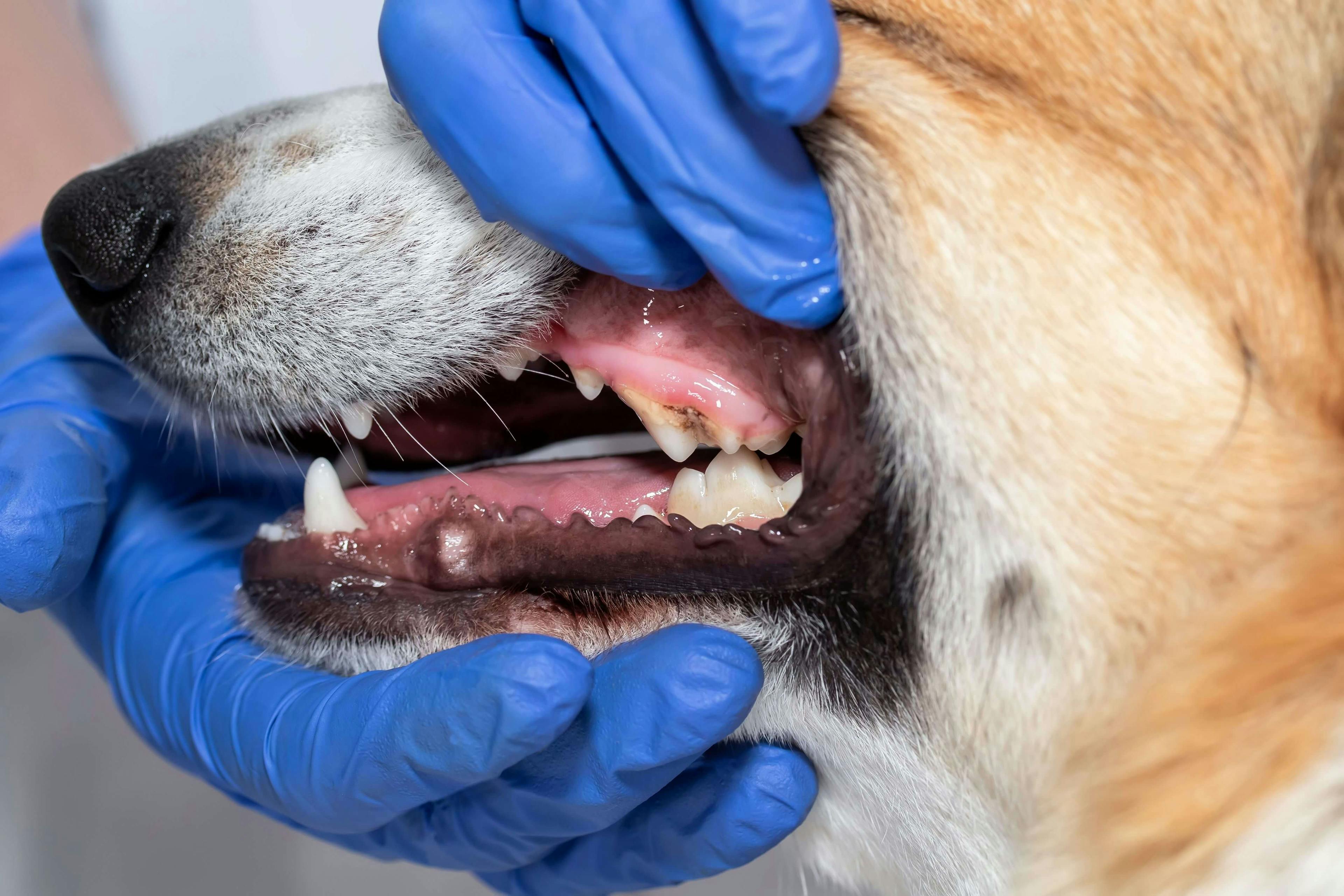
Dog teeth cleaning is not always a high priority for dog owners, and if it’s done, it’s often not regular – however, it is an essential part of keeping your dog’s overall dental health in check. Unfortunately, the number of dogs with dental disease is way too high, with many dogs developing some form of dental issue before turning three. So, are you ready to learn about how to clean your dog’s teeth and keep them clean?
We’ve got all the teeth cleaning basics covered, along with some helpful tips and insights from Petstock VET, Dr Natalia Li. You can do more than you think to keep that smelly breath at bay and those pearly whites in excellent condition.
Brushing your dog's teeth: how to

To avoid dental disease in dogs, you should have a regular routine to keep your dog's teeth and mouth clean. With a slow and consistent introduction of teeth cleaning products to your dog, it doesn't need to be a high anxiety or comical event. Dog teeth cleaning should become part of your ongoing care routine.
What you'll need
Firstly, you won’t be using a human-grade toothpaste or toothbrush to clean your dog’s teeth. Instead, there is a range of dog teeth cleaning tools available to purchase, along with complete cleaning kits.
“These specialised toothbrushes are designed specifically for canine dentition and are usually a little less abrasive than our average human brushes.” - Dr Natalia Li, Petstock VET.
Beyond dog toothbrushes and toothpaste, additional cleaning products are available: - Toothpaste and gel - Water additive - Toothbrush
How to clean dogs' teeth: the technique
Squeeze out the toothpaste required according to the package (different manufacturers may have different requirements), then. With or without another person’s help, gently pry open your pup’s mouth, and run the “pasted” dog toothbrush on all teeth (again gently) from as many angles as you can, just like how you would brush your own teeth.
The golden standard is to brush your dog's teeth at least once daily.
You want to use small, circular movements over the teeth, all the way up to the gum line, to make sure you cover off the entire surface. If you notice any blood on the toothbrush, it’s worth getting this checked at the vet to ensure it isn’t an early sign of periodontal disease.
“After brushing your dog’s teeth, tell your pup what a good dog he/she is and potentially give a treat as a reward. You can also choose to give a dental treat and let it take care of the nooks and corners you may have missed.” says Dr Natalia Li, Petstock VET.
Note: It’s important you never use human toothpaste to clean your dog’s teeth because some of the ingredients can be toxic to dogs.
Dr Natalia Li’s steps and tips for dogs who really don’t like teeth cleaning
If your dog is uncooperative with the teeth cleaning process, start without the minty stuff and scary toothbrush. Instead, use a bit of meat juice or tuna juice, dip your finger in it and rub it against their gum line to show them what a good time they are having. You can also look to alleviate their fear of the brush by first leaving it next to them without any action. If they choose to stay calm near the brush, then reward them with lots of treats. The last step would be putting the brush closer and closer to their mouth, again with lots of treats if they’re behaving, and eventually, move onto putting the brush into their mouth. Again, start with meat juice on the toothbrush first, then eventually when they stop being resistant, use the actual dog toothpaste or gel. If your pup is particularly anxious and the process is causing too much stress than it should, don’t force it too hard. The pressure is not worth it, and you can always resort to daily dental treats and water additives, along with your regular professional dental cleans. Just remember, dental treats and water additives won’t be as effective as actual brushing, even though your pup would appreciate it.
*It’s important you never use human toothpaste to clean your dog’s teeth because some of the ingredients can be toxic to dogs.
The role of dog dental sticks and chews
Dental chews and sticks are excellent for helping keep your dog’s teeth clean by mechanically removing plaque and preventing tartar and plaque formation. While we don’t recommend treats or chews to replace manual or professional teeth cleans, they do assist in maintaining your dog’s overall dental health.
Dog dental sticks and dental chews
Top picks for dog dental sticks and chews to complement your dog’s teeth cleaning routine.
More products to help keep your dog’s teeth clean
It’s not just dental chews and sticks which help keep your dog’s pearly whites in the best condition –other natural products and toys deliver similar benefits.
Treats and bones
You'll find there are many different treats and bones that assist in keeping your dog's teeth clean – it's important to understand the ingredients and related dietary information before settling on particular treats.
For large dogs, big bones are best, with dental sticks a better option a great alternative for small dogs. It is essential only to feed raw bones, as cooked bones may splinter and cause oral or intestinal injury. It's also vital to ensure the raw bones (or any meat product) are fresh and that care is taken with marrow bones as they can be rich and fatty.
Toys
Playtime can also be a great excuse to give your dog something to benefit their teeth and gums. There are many toys available with specifically designed surfaces and edges that take care of lingering plaque build-up.
Switching to dental food for dogs

Another way to keep your dog's teeth clean is to feed them tailored dental food, available in various recipes from many pet foods brands and manufacturers. Oral care or dental food is specifically formulated to support and maintain your dog's dental health with specialised ingredients, as well as the design of the kibble. If you are thinking of switching your dog to dental food, you should consult with your vet to ensure the diet is right for your dog and it's a smooth transition.
"Dental food is designed to help with creating more friction with the teeth than normal kibble. If you decide to feed your pet dental food, keep in mind that they must only be eating dental food in one sitting and should not be mixed with another kibble. However, if you want to feed them non-dental food at another time, it's okay to do so, as long as it's not in the same meal/mixture." – Dr Natalia Li, Petstock Vet.
Dental food options
Note: With any substantial change or alteration to your dog’s diet you ensure the transition is gradual and that you speak to your vet if you notice any changes in behaviour or health.
Professional dental checks and cleaning

While it’s important to clean your dog’s teeth at home, you should also book your dog into a vet for regular professional dental cleans. We recommend visiting your vet for a dental clean every six months but speak to your vet for a more personalised and holistic dental care plan.
The procedure
A professional dental clean will ensure all plaque and build up are removed with specialised equipment at the vet. Here is a breakdown of what you can expect at a Petstock VET when you book in for a dental clean.
- Full health check with a Petstock VET
- Blood tests to ensure your dog is able to be placed under anaesthesia
- Your dog is then placed under anaesthesia
- The dental clean takes place, while your dog is monitored at all times
- Post clean consult once your dog is awake and has recovered
Want to know more?
A professional dental clean includes an ultrasonic scaler that removes all resistant plague and tartar safely. Subsequently, this resolves gingivitis caused by these pockets of bacteria and debris on the teeth. Due to the ultrasonic scaler being loud and potentially distressing, dental cleans are always performed under a general anaesthetic, and this also allows vets to perform a full oral examination. While under anaesthetic, the vet may also be able to identify other oral lesions or diseased teeth, then they can remove them at once before they cause too much pain and discomfort for your pet.
Do you know about Petstock Vet?
Find your local Petstock VET clinic for personalised support.
Learn MorePetstock VET offers free dental checks to all dogs. This is a helpful first step to assess the condition of your dog’s teeth before any procedure or action is taken.